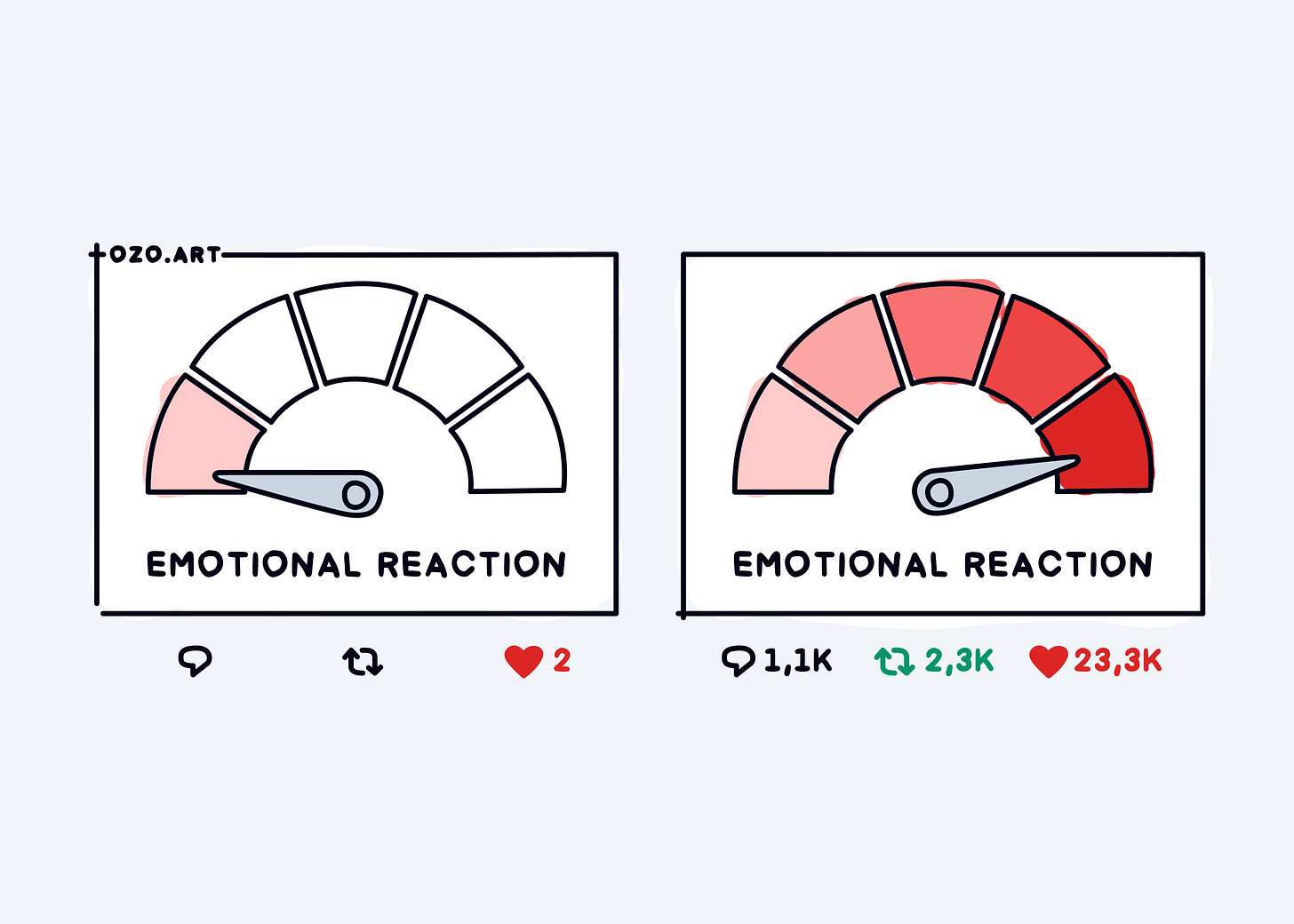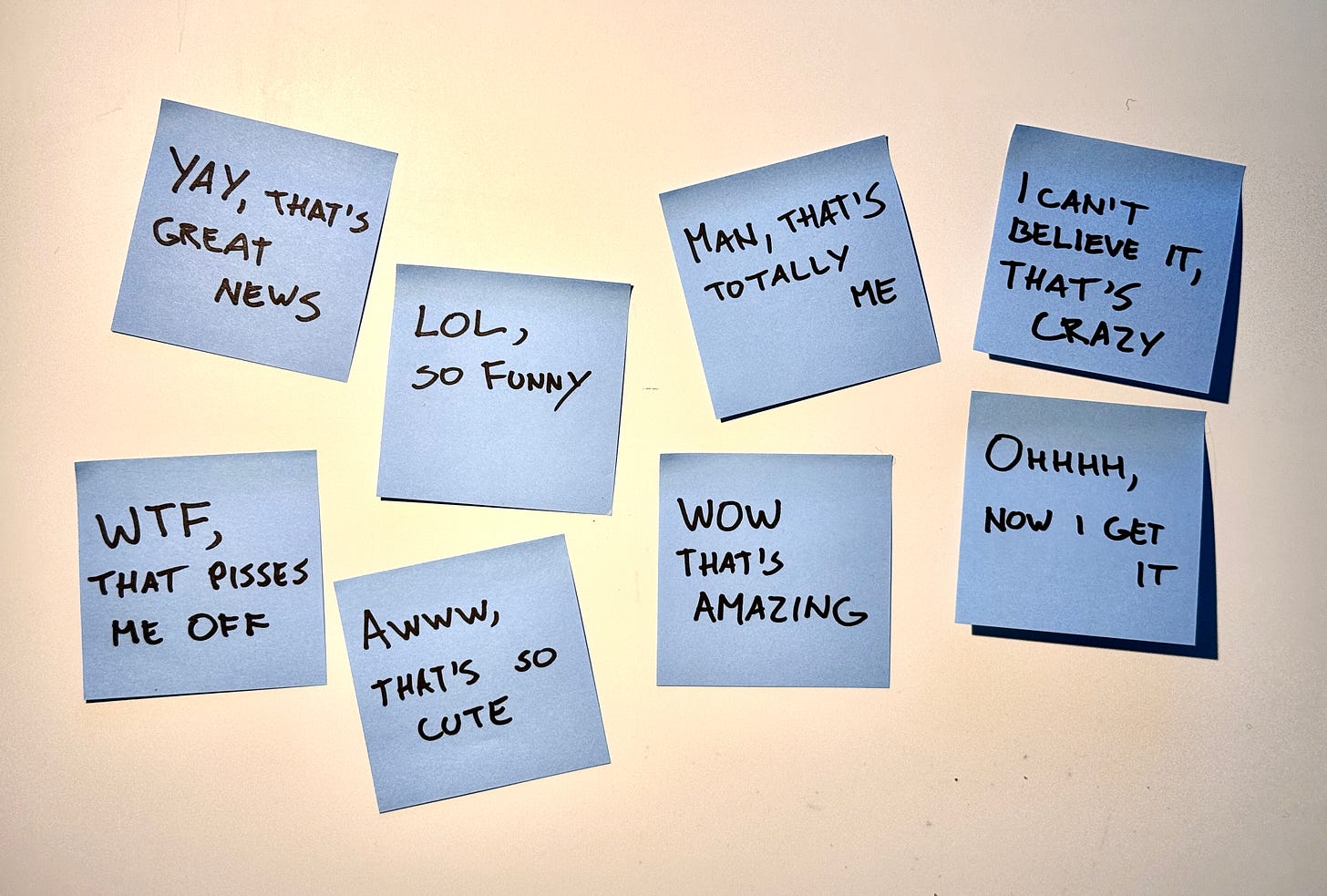Want engagement? Evoke emotional reaction.
You can’t remember where you left your keys five minutes ago, but you do remember that embarrassing thing you said in 2007.
Hey you, welcome back to Explain Ideas Visually — the newsletter that helps you say more with less.
Quick update: I launched a paid plan. Free readers will get these posts every Saturday — nothing changes.
But if you go paid, you’ll unlock a new visual template every Monday (with tips on how to use it) and a prompt that helps you apply it in your content right away.
More on that at the end. Let’s dive in today’s issue.
↓
Anyone who has ever watched Inside Out knows that powerful memories are triggered by powerful emotions. You can’t remember where you left your keys five minutes ago, but you do remember that embarrassing thing you said in 2007. You indifferently scroll past world hunger statistics but burst into tears at a cereal commercial. Why? Because of these guys:
But emotions don’t just mess with our memories — they’re also the secret sauce for making ideas stand out. Make your visuals emotionally impactful, and suddenly your ideas don’t just get noticed — they stick.
So, how do we give our ideas the Inside Out treatment?
Start by creating your idea with the end emotion in mind. Decide on the emotional reaction you want your viewers to have, and build your visual from there.
I say “emotional reaction” because thinking about broad emotions—like anger or joy — can be a bit abstract. Things get more straightforward when you focus on specific reactions, like these:
LOL, so funny
Man, that’s totally me
Wow, that’s amazing
Awww, that’s so cute
Ohhhhh, now I get it
I can’t believe it, that’s crazy
Yay, that’s great news
WTF, that pisses me off
I used these kinds of emotional reactions intuitively, but a couple of years ago, I worked with Shaan Puri on his Power Writing course, and I loved how he named these reactions. I’m sharing some here — blended with a few of my own.
Personally, my favorite reaction is: “Man, that’s totally me.”
I know I’ve hit the mark when I see comments like:
Are you spying on me?
That’s so me!!!
Omg, this is exactly what happens!
Reading a bunch more comments from one of my first viral posts.
This kind of emotional response makes people feel seen, and when people feel seen, they connect with your content on a deeper level.
While this emotion (let’s call it relatability) works great for me, you can tap into a whole range of emotions and reactions — including negative ones.
In their book Made to Stick, the Heath brothers highlight emotion as one of the key pillars for making ideas memorable. When discussing negative emotions, they describe how an anti-fast-food campaign failed to stick when it simply shared nutritional facts. But when people were told how much fat a burger had by comparing it to a stick of butter, it made them feel disgusted, and that stuck.
Emotions are a universal language. They connect people from different backgrounds — and when you use them well, your ideas don’t just get seen — they travel across those backgrounds.
Make these, stick them next to your workstation, and look at them before creating your next piece of content.
–
Janis Ozolins / ozo.art
Off to celebrate my 35th birthday! 🥳
P.S. – What you unlock with the paid plan (and why I made it).
I love this form of communication and I’m committed to pushing it forward — to keep learning, improving, and finding better ways to explain ideas visually.
The paid plan adds an extra layer of accountability and supports the time and energy needed to share even more with you.
Each Monday, paid subscribers get a new visual template, a modifiable Figma file, simple instructions on how to use it, and an AI prompt to help with brainstorming.
If that sounds interesting, you can subscribe below and I’ll send you the first template on Monday (April 28).








Happy Birthday!
Have an emotional birthday 😉